News
Scientists create better-for-you bread
28 Mar 2016A team of food scientists from the National University of Singapore (NUS) says it has successfully formulated a recipe for making healthier bread by adding a natural plant pigment, called anthocyanin, extracted from black rice.

A team of food scientists from the National University of Singapore (NUS) says it has successfully formulated a recipe for making healthier bread by adding a natural plant pigment, called anthocyanin, extracted from black rice. This new bread option gets digested at a slower rate – hence improving blood glucose control – and is high in antioxidants, among other health benefits. This is said to be the first study where anthocyanin extract has been fortified into a bread product, and the findings open up new possibilities of creating healthier, diabetic-friendly food products.
Bread is a popular staple food for many people around the world. Most bread contains a high amount of rapidly digestible starch, and hence many of them have a high glycaemic index. Food high on the glycaemic index are rapidly digested and absorbed into the bloodstream quickly, causing a sharp increase in blood sugar levels and making them unsuitable for diabetic patients. In addition, rapid digestion of bread may result in people consuming more bread than required to make up the hungry feel. The excessive consumption of bread could increase the risk of overweight and obesity, and their associated diseases, such as Type II diabetes.The anthocyanin-fortified bread created by NUS researchers could potentially bring health benefits to consumers looking for a healthier option to normal bread. The findings of the study were published in the journal Food Chemistry in October 2015.Anthocyanins belong to the group of flavonoids that are naturally occurring pigments in fruits and vegetables, and are responsible for the orange, red, violet, and blue colours observed in nature. Fruits, such as blueberries, grapes, blackberries, as well as grains and vegetables like black rice and purple sweet potatoes, are naturally rich in anthocyanins.Scientific studies have shown that anthocyanins are rich in antioxidant properties and may help prevent cardiovascular and neurological diseases, cancer, and inflammation. Anthocyanins are also known to play a role in controlling obesity and diabetes as they can inhibit digestive enzymes and hence reducing blood glucose levels.“Despite their antioxidant capacity and associated health benefits, the knowledge of using anthocyanins as an ingredient in food products, particularly semi-solid products, is very limited,” said Professor Zhou Weibiao, Director of the Food Science and Technology Programme at the NUS Faculty of Science. “Hence, we wanted to explore the feasibility of fortifying anthocyanins into bread, to understand how it affects digestibility and its impact on the various quality attributes of bread.”Currently, approaches for developing health-promoting bread are dominated by adding whole grains and fibres in bread, partly aiming to slow down its digestion among several health benefits. “Reducing the digestion rate of the bread will lead to a lower glycaemic index and slower absorption of the bread’s carbohydrates,” said Dr Sui Xiaonan, a recent PhD graduate from the Food Science and Technology Programme at NUS and first author of the study. “This usually suggests a lower insulin demand, and could potentially improve long-term blood glucose control. Our study explores an alternative way of producing functional bread that delivers health benefits to consumers.”The NUS team, led by Prof Zhou, found that digestion rates of the anthocyanin-fortified bread reduced by 12.8 per cent, when 1 per cent of anthocyanin extract from black rice was added into the bread dough and baked at the optimal condition of 200 degree Celsius for 8 minutes. The digestion rate dropped further to 20.5 per cent, when the amount of anthocyanin extract increased to 4 per cent.Another area of interest for the team was to explore a way to incorporate anthocyanins into bread to improve its value as a health-promoting food. The team had previously conducted a study in 2014 to examine the degradation of anthocyanins during baking. They found that more than 80 per cent of the antioxidant capacity was retained in the bread crust and crumb, even when baked at temperatures as high as 240 degree Celsius for up to 12 minutes.“Our results demonstrate that it is indeed feasible to create functional food products through anthocyanin fortification, using bread as an example,” said Zhou. “We hope to conduct further studies to incorporate anthocyanins into other food items, such as biscuits. Our team is also keen to explore opportunities to work with industry partners to introduce the anthocyanin-fortified bread to the market.”Related news
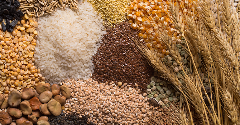
Sustainable grains present a healthy growth opportunity
3 Oct 2024
Food insights provider SPINS unveils the latest trends in the sustainable grains field, exploring how seven leading grains show healthy growth despite challenges in the global value chain.
Read more
New environmental food scoring standards emerge
30 Sep 2024
EIT Food and Foundation Earth collaborate to launch environmental food scoring for products entering the global supply chain.
Read more
Africa progresses with food transformation strategy
19 Sep 2024
Large-scale efforts are underway to drastically change the African food sector with a $61 billion (€55 bn) set of proposed transformation plans to be implemented across forty countries. Yet there are concerns that this initiative severely jeopardises s...
Read more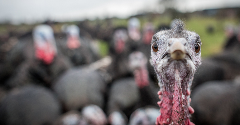
Diestel is first turkey producer to snag Regenifed certification
17 Sep 2024
In the US, Diestel Family Ranch, a family-owned turkey farming venture, has become the first producer to gain Regenified certification for its whole turkey and processed turkey product ranges.
Read more
Upside Foods sues Florida over cultivated meat ban
10 Sep 2024
In May, Florida became the first US state to ban cultivated meat's sale, manufacture, and distribution. Upside Foods, a cultivated chicken startup, has filed a federal lawsuit in response, arguing that the law is unconstitutional.
Read more
European consumers want more freedom to choose biotech-based food
3 Sep 2024
Survey findings point to growing levels of interest in cultivated meat as European consumers say they want the freedom to choose the lab-based products.
Read more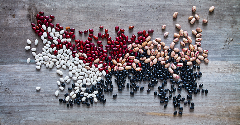
How alternative proteins could transform US agriculture and restore natural ecosystems
30 Aug 2024
As the US seeks new strategies to meet its environmental targets, a recent report from the Good Food Institute (GFI) and Highland Economics highlights the potential of alternative proteins to drive significant progress.
Read more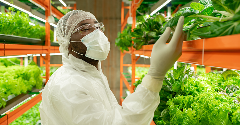
How insecure are our global food systems?
29 Aug 2024
Countries across the globe are struggling to secure safe and accessible food, according to recent reports.
Read more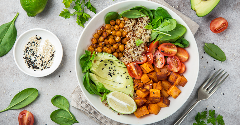
Austria’s new dietary guidelines recommend less animal protein and more plants
23 Aug 2024
Austria's dietary guidelines have been updated to reflect health and climate parameters. Both an omnivorous food pyramid and a vegetarian version are included, marking the first time a separate pyramid for vegetarians is provided.
Read more
Will ‘foie gras’ become the EU’s first approved cultivated meat?
20 Aug 2024
French startup Gourmey has submitted its cultivated foie gras for approval in the European Union (EU), signalling the first application of its kind in the region.
Read more